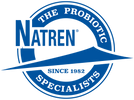The world we live in literally thrives thanks to bacteria. Human beings must have carbon, nitrogen, the ability to fight off disease and digestion to survive – all things that rely on microorganisms. Besides recycling organic matter to create carbon and nitrogen, bacteria on the skin work as an army to keep out dangerous pathogens and, internally, they break food down into the nutritional units used to sustain major systems. What about babies, though? At what point do bacteria become a life-saving force for their little bodies? Does that happen at birth or are microbes essential for development, too?
Ten years ago, medical science would have said that babies and bacteria don’t become bedfellows until that actual birthing process. Until then, they live their lives in a pristine ‘capsule’ free from both good and bad pathogens. Today, doctors know that the womb is not the sterile environment they once believed, but one flush with a few bacteria working to help the baby develop a healthy microbiome while still developing.
Placenta Microbiota
Scientists no longer believe the placenta is a germ-free environment that protects the growing fetus from bacteria. In 1982, a group of researchers discovered aerobic bacteria in healthy placenta samples. Additional reports flooded in confirming that observation, many finding bacteria not only in the fluid but inside the intestinal tract of the fetus.
When breaking down the elements of this placenta microbiota, they found the most represented phylum was Proteobacteria. In fact, the make-up of bacteria was very similar to what exists in the oral cavity of an adult suggesting the possibility that the bacteria enter the placenta via the mother’s mouth. This finding makes sense when you consider that periodontal disease is a risk factor for complications during pregnancy. Periodontal disease increases that amount of bad bacteria in the oral microbiota. You can read more on our previous blog: Why You Should Visit Your Dentist Before Getting Pregnant.
Early Colonization of a Newborn
Since most physicians believed that new babies came into the world from a sterile environment, the assumption was that the fetus was also free of bacteria until entering the birth canal. Several studies including a 2013 report published in Beneficial Microbes suggest that this information is also incorrect. The colonization of babies begins prior to leaving the placenta. The 2013 study researchers inoculated an expecting mouse with a strain of bacteria and then delivered the babies via C-section later. They found that the newborns carried the same bacteria in their intestinal tract, proving that bacteria begin to colonize in newborns prior to their birth.
How Delivery Mode Affects Newborn Microbiota
Once science was able to accept the concept of early colonization, the question became what factors influence the infant’s microbiota? One clear answer was the mode of delivery. Babies born vaginally are introduced to bacteria living in the vagina such as Prevotella, Sneathia and Lactobacillus and they become part of that infant’s gut microbiota.
On the other hand, babies born by C-section pick up microbes from the surface of the mother’s skin and the hospital environment, instead. Infants delivered via C-section tend to have a microbiota rich with Propionibacterium, Corynebacterium and Streptococcus.
Delivery mode is just one decision that will affect the microbiota of the infant in the first year of life, a time when the gut environment starts to mature. There are bacteria in mother’s milk that may play in role in developing a diverse and effective gut ecosystem, too. Formula, on the other hand, fails to offer this same benefit. Both breast and bottle feed babies need proper gut microbiota support in these early years, though.
Natren’s Infant Probiotics
It’s important for parents to understand how the gut microbiota shapes the wellness of their newborn babies. Medical science is finally acknowledging the critical role a healthy gut plays in health and disease. Understanding how infants are colonized is just part of the process. By adding additional beneficial bacteria to an infant’s nutrition plan such as the Bifidobacterium infantis found in Natren’s Life Start mother’s can help the maturing infant gut to diversify in a way that promotes a healthy body for years. Life Start contains at least 1 billion cfu of this essential strain in each serving, a species that researchers have named “the champion colonizer of the infant gut”. The powder formula makes it easy to use for both the breastfeeding and bottle feed baby, too, providing much-needed gut support. You can click here to learn more about the best probiotics for newborns.
The post How Mom’s Pass Bacteria to Their Babies appeared first on Natren Probiotics Blog.




0 comments